 Last September, Lockheed Martin a bit unexpectedly released version 3 of Prepar3D. Some people heralded it as being the next best thing to sliced bread, others saw it as a money grabbing move with what should have been Prepar3D version 2.6. The reality, as usual, is more likely to be found somewhere in between those extremes. So, let’s take a look!
Last September, Lockheed Martin a bit unexpectedly released version 3 of Prepar3D. Some people heralded it as being the next best thing to sliced bread, others saw it as a money grabbing move with what should have been Prepar3D version 2.6. The reality, as usual, is more likely to be found somewhere in between those extremes. So, let’s take a look!
The first version of Lockheed Martin’s Prepar3D (pronounced “prepared”) was released in November 2010. It was, and still is, a simulator based on Microsoft ESP, basically the commercial-use (as in: not for private use) version of Microsoft Flight Simulator X. Over the years, features have been added, legacy problems have been fixed and the platform has slowly diverged more and more from FSX as we know it. Version 1 wasn’t too different from ESP and FSX through its lifecycle. There certainly were differences, like how the entire user interface was modernized, but it basically was a cleaned up ESP/FSX.

Version 2 certainly deserved it’s new name. The biggest difference here was now real support for multi-core processors and an overhauled rendering system with support for DirectX 11. Since ESP/FSX was designed in a time where single core processors with high clock speeds where the norm, it never was very efficient in running on a multi-core system with slightly lower clocks. Combined with the move to DirectX 11 compatibility, this multi-core support enabled better performance (or more detail at the same performance, as you prefer) and new features such as more realistic lighting and shadows. Between November 2013 and February 2015 Prepar3D version 2 received semi-regular service packs, eventually reaching version 2.5.
And now we come to the current version. When many people were expecting version 2.6 to roll out, Lockheed Martin surprised us, by releasing Prepar3D version 3. Much of the controversy in this move lies in the way that LM, as with version 2 previously, doesn’t provide a discount for existing users. So version 2 users have to buy version 3 just like everybody else. What also didn’t help was that the vast majority of the points on the changelog were bugfixes. Since I had bought version 2 only just before 2.5 was released, and never got it to where it would be my primary sim due to other stuff taking priority time-wise, I wasn’t all too happy about putting another wad of cash on the table myself either. But it did provide me with a new “point zero” which has directly led to me being able to write this article.

Legal:
Since the very first release of Prepar3D and up till the present, there’s big elephant in the room that has to be discussed. Are we, the average armchair-pilots, allowed to buy and use this simulator? And if so, which version or license?
Before I go on, please note that I’m not a lawyer, and a person trained in legal matters might have a radically different view on the following matter. Don’t take what I write here as legal advice.
First of all, are we allowed to use it? The P3D License page shows big red crosses next to the category ‘Personal Consumer Entertainment’. But also states: “The license is available to those that are training, instructing, simulating, or learning.”
This leads to the question: is home flight simulation entertainment, or does it fall under the “Training, instructing, simulating or learning” category? Personally, I’d say it can be both. My personal, and definitely not legal-advice, view on this is that Lockheed Martin has to make this distinction to honour their legal agreement with Microsoft (they bought the rights to ESP, not to FSX) but they’re more than happy to take your money and let you “train, instruct, simulate and learn” in their sim. I’d wish LM made this more clear, but I don’t expect it to happen. Too much lawyers and legal agreements in place for that to happen.
So, again my personal view, but I’d say go for it. Just keep in mind to ‘train’, not ‘entertain’.

And now let’s talk versions and licenses.
Prepar3D v3 comes in 2 versions: Professional, and Professional Plus. The biggest difference is that the Professional Plus version enables the use of weapons and weapon related systems in the sim (if supported by your mission specific add-ons, don’t expect any of the default aircraft to use these features!). Oh, and the price. A single license for this version costs USD 2300.00. So quite clearly, this version is aimed at professional customers who buy the basic sim-environment but develop their own specific add-ons and training scenarios.
If you’re reading this article, you’re more than likely interested in the ‘normal’ version. But even then it’s not clear-cut. There are 3 licenses for this version. The ‘normal’ license comes in at USD 199.99 and comes with no special conditions apart from those mentioned above. The developer license is a subscription based option that comes in at USD 9.95 per month and is aimed at software developers. Many normal users picked this option when Prepar3D v1 was first released, because the normal license cost a whopping USD 500.00 at first. With the current price of the other licenses, there’s little appeal in this license option for normal users I think, although there will be some who’ll see reasons to pick this.
The third option is the academic license at USD 59.95. I daresay it’s the most popular license, and it’s also the one I got. But there’s a problem here. Officially, legally, this license is limited to students and teaching staff of undergraduate level or lower. While many people who buy this license fall in this category (I did when I bought v2), many do not. “Then why go for this version?”, you might ask. There are several reasons. The price is the most obvious. There’s quite a bit of difference between USD 60 and USD 200. A second reason is that there is no difference in the software you get from the normal professional license or the academic license, apart from a non-intrusive watermark in the latter version. And another important reason is that some add-on developer limit their products to use in the academic version, and don’t allow installation in another version or charge you (sometimes significantly) more money for it.
This whole situation is legal quicksand, but the fact that Lockheed Martin doesn’t check or enforce the ‘for academics only’ condition has led many to buy this version even when they don’t confirm.
Also note that this situation of legal limbo has delayed the adoption of P3D by quite a few well-regarded FSX publishers or developers, although most of them have made the jump by now.


New features in version 3:
Despite all the previous stuff, Prepar3D v3 is not without new features. It’s not only fixes or small updates. The first and most visible of these, is a tuned graphical user interface. Not too important a change, but I like it. The blue is a bit darker in both the desktop icon, the splash screen and the menus. Overall, a good looking and professional layout. Many other new features are much less visible, basically being ‘under the hood’. One of these is the tweaked memory handing. While still being a 32-bit application (and as such, limited to 4GB of memory usage), its memory system received quite a big update, with unused memory items now being unloaded much, much more efficiently, something especially long-haul virtual pilots will appreciate to great extent.
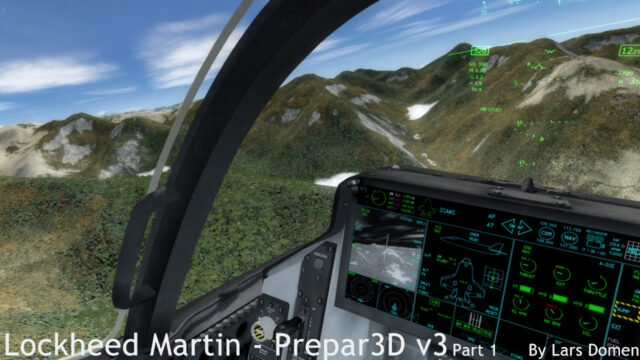
Another ‘under the hood’ change is that P3D now supports Adobe Flash content, using the Autodesk Scaleform middleware to integrate it into the simulator environment. In fact, several parts of the User Interface in P3Dv3 were rebuilt to use this technology. I’m not sure how much the general flight simulation community is going to notice of this new possibility in third-party add-ons, because it’s something that will limit backwards compatibility with FSX or previous versions of P3D. It is very interesting however, for more specialised applications, or when a developer is not concerned with backwards compatibility.
Another change is that P3D now aims to have most third party content installed outside the main installation folder. It’ll still work just fine the old way though, so no need to worry if third party content creators don’t follow just yet.
The most visible new gameplay feature is the Avatar mode. This mode allows you to walk around your aircraft with a completely modelled and animated human figure. Some might call this an unnecessary visual gimmick. But in my opinion it’s a nice addition. Think about the possibility of doing an exterior pre-flight walk around, or walking up to your aircraft on the flight line in a scenario.
Another new feature mentioned is the support for the so-called SpeedTrees. These are high detail, animated 3D trees. Especially the ‘animated’ part begs attention here.

Let’s take a look:
Installation:
That’s enough of the theory. Let’s see how this new version handles. For this part of the review, I’ll stick to the simulator in stock condition, with no third party add-ons whatsoever.
Whatever version you decide to go for, buying a license is actually quite a simple process on the prepar3d.com website. One slight downside is that the only payment option is to use a credit card. Whereas more ‘general public’ aimed websites are now offering other payment methods like Paypal, bank transfer or others in addition to credit cards, this is not the case here.
Installation is a simple case of first downloading the installer, running it, and entering your serial the first time you run the simulator. The download is not insignificant though, a 10GB zip-file. If you have a slow or unreliable internet connection, this might be a troublesome. Luckily, there’s also the option to download the required files separately. The total size is the same, but the individual parts are much more manageable.
Actually running the installer was simple and straightforward. No issues here. I would still recommend installing outside the ‘program files’ folder on your pc, but the reasons for that are Windows related, not specific to P3D. One major change compared to older versions, is that v3 now splits the application in 3 parts: client, content and scenery. Each of these parts can be installed and uninstalled separately, and thus also updated seperately. You do need all of them combined to run the sim though, obviously.
Activation happens when you first run P3D v3. You get the option to either activate online, or use another computer to activate. I just used the online option, and this worked without a hassle.


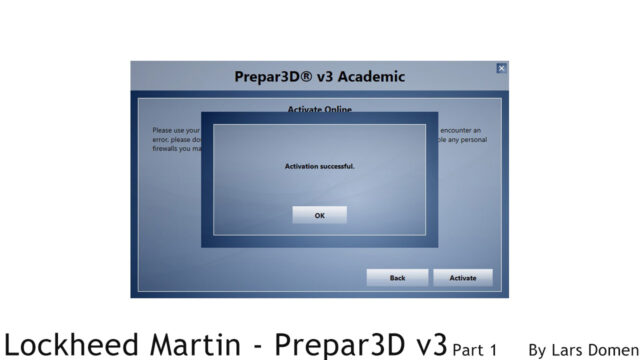
Lockheed Martin released a first update for P3D v3 while I was writing this review. The update to v3.1 doesn’t change anything in the installation process if you’re new to version 3. If you had version 3.0 installed, the update to 3.1 gives the first insight into the upsides of the new installation structure. The only required update is for the P3D v3 client application, and is less than 200MB in size. Updating the content and scenery is possible, but not required. Those will deliver some fixes and updates, but nothing too significant.
First flight:
When you start Prepar3D version 3, you get a ‘splash screen’ while the application loads. But you’ll be looking at this screen much less compared to FSX. P3D v3 loads quite quickly. Even compared to a stock FSX without add-ons installed. Once it is loaded, you are presented with a ‘Scenario Setup’ window. This is similar to the ‘Create a Flight’ screen in FSX. Using a checkbox, you still have the option of starting P3D directly into your default scenario. I personally prefer to be able to change some stuff before loading a flight, but I applaud having the option to choose what you prefer in there. One thing I’m missing in the ‘Scenario Setup’ window is a direct way to change options. At the moment you have to load a scenario and then use the menu bar to go into the options. There is the possibility of selecting saved graphical profiles though. A nice addition if you have a profile for high altitude flight and one for low altitude VFR flights, for example.

When you first load the simulator, you’ll notice that the default scenario is a Lockheed Martin F-22 Raptor at Eglin Air Force Base (KVPS) in the USA. Not particularly surprising, starting in a Lockheed Martin aircraft in a Lockheed Martin piece of software. But for those of you who are not familiar with the earlier versions of P3D, having a default F-22 in the sim is new. Indeed, the line-up of default aircraft is very different from FSX. Compared to P3Dv2, the changes are minimal. The extra helicopter (the Virtavia Blackhawk) in addition to the R-22 is welcome. For a list of default aircraft, go here.
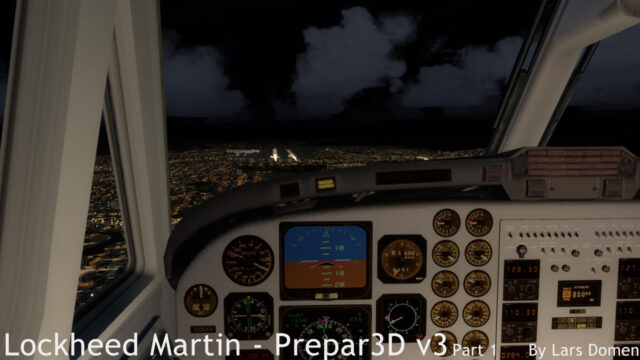
There’s a couple of things that can be said of the default vehicle list.
First of all, I like the fact that there is ‘third party created content’ shipped with the simulator, alongside some old acquaintances with FSX heritage. Unfortunately, in my opinion, the quality of that content is inconsistent at best. They vary widely in terms of visual quality, flight modelling and systems simulation. It gives a strange, unpolished impression, despite some of the aircraft being quite good in one or more aspects.
Another thing to be said here is the remarkable exclusion of a modern airline-type aircraft from the list of default aircraft. Neither is there any aircraft carrier capable aircraft delivered with the sim. 2 remarkable exclusions.
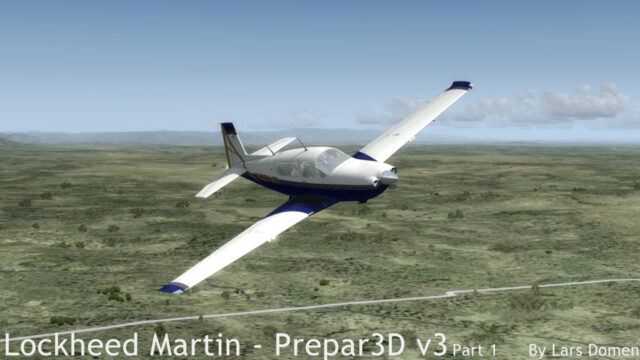
Starting the default scenario for the first time, I was very pleasantly surprised in 2 aspects. Both relate to the usability of the simulator ‘out of the box’. The first thing I noticed was that the default visuals settings were much better suited to my hardware then I was expecting. No need for a whole lot of tinkering and tweaking to get it running smoothly while still looking good like I’ve done so many times with FSX. Just fire it up and go. With default scenery and aircraft that is, I’m expecting to have to do some tweaking when I start introducing more and more third party products in the mix.
The second aspect I noted was that the simulator correctly assigned all my control axes. Not that surprising when it came to the simple Logitech joystick I had connected for the first flight. But I was pleasantly surprised that the sim also recognized and correctly configured the Saitek rudder pedals that are under my desk and always connected to my pc. This is something FSX certainly didn’t do. The only thing I had to change was removing the rudder axis binding from the joystick twist handle, as it interfered with the rudder pedals, but this was something I was expecting.
When I later connected my Saitek Cessna Yoke, I noticed that the yoke axes were configured correctly, but the throttle quadrant axes weren’t configured at all. I rather have the sim decide not to assign something, than assign it randomly leading to strange situations if you don’t double check everything first. So a very nice experience as well.
What you still need to do is set up the sensitivity and dead zones of all axes to your preferences. Like FSX, P3Dv3 sets those all up somewhere in the middle, which in most cases isn’t optimal.
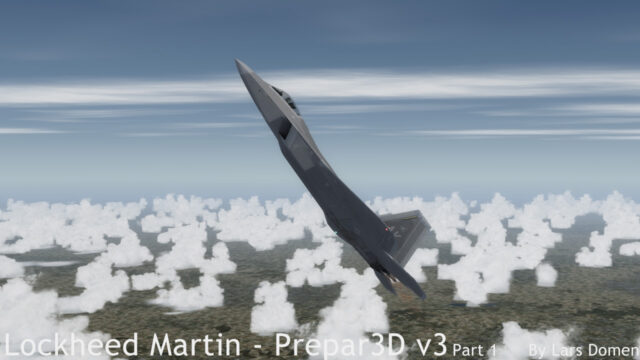

Impressions, impressions, impressions…
Visuals:
Compared to Prepar3D version 2, the overall visual feel of the simulator hasn’t changed noticeably. When we compare it to FSX though, the difference is remarkable. The reasons for this are not surprising: an updated rendering engine introduced in P3D v2, with newer and more efficient lighting and shading models. Even with everything else remaining equal, this will have an impact on how a scene looks. What has changed, is the graphical user interface that is overlaid over the sim. Functionally, it’s pretty much the same. But it now looks even more professional in my opinion, although whether you like the new style or not is a matter of personal opinion.


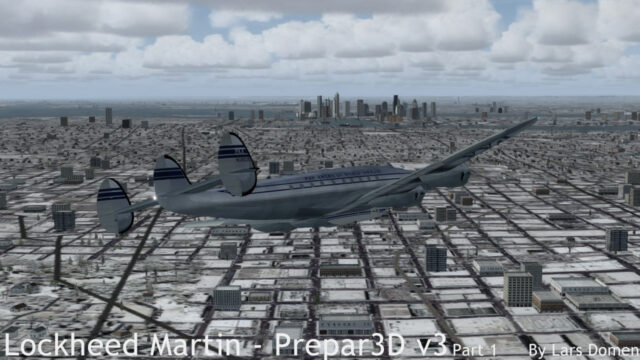
One new feature in P3D v3 that’s primarily visual, is the inclusion of the new SpeedTrees. As said before, these are supposed to be high detail, animated 3D trees. First thing to clarify here, is that these trees DO NOT replace the normal autogen trees. Those haven’t changed. SpeedTrees however, are available for developers to be integrated in custom scenery. To showcase this new feature, Lockheed Martin placed some of these new trees around Eglin Air Force Base, where the default flight originates. I have to say, they do look impressive, these new trees. Even without animations, the models are much more detailed and much, much better looking than usual trees in P3D or FSX. But they really catch your eye when you see them moving and swaying in the wind. It’s not that obvious when flying past them quickly. But when taxiing, or when flying past them slowly, in a helicopter for example, the result is stunning.
There are some downsides too though. First of all, they do affect performance. So replacing all autogen with these new trees is just not feasible at the moment. And this directly leads to the second downside: it’s a bit weird and ungainly seeing these new detailed trees side-by-side with the old, much plainer trees.


Avatar Mode:
I have mixed feelings about this new Avatar mode. Walking around the sim-environment using a human figure is a nice new feature, that opens up possibilities. So no complaining from me there. What does bother me is that the current implementation feels a bit rushed and unpolished. First of all, there’s no easy-to-find documentation that actually helps you to get started with this feature. Next, only one model is included by default, a guy running around in jeans and a shirt. A very neutral representation for sure, but not really representative of the majority of people you find around airports. Finally, the default included Avatar model also has some limitations. It’s animations don’t really convince for one. And because of collision boxes (invisible structures used to detect collision with terrain or other objects), the Avatar often gets stuck around the aircraft.
I like the possibilities the Avatar mode brings to the sim, but I’m missing diversity and polishing. The getting stuck problems should be fixed, and some more models would be nice to have as well. Luckily, avatars can also be added by third parties, and some are already available.
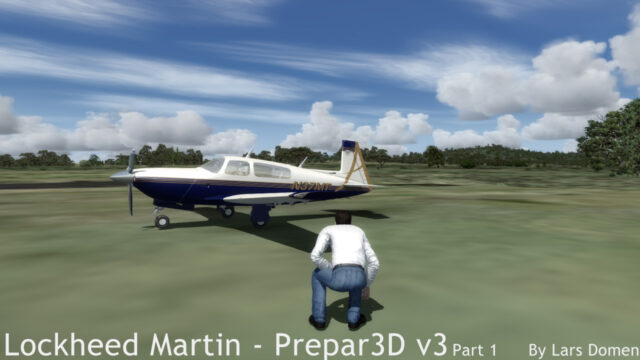
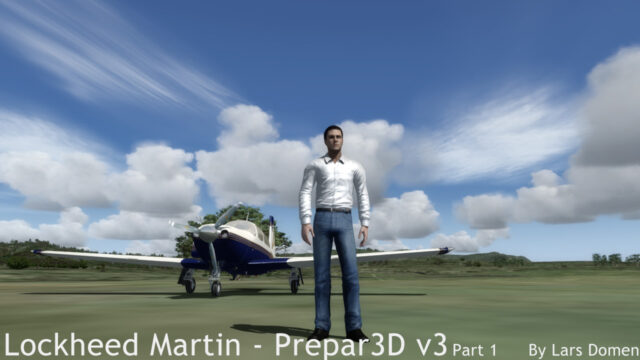
Aircraft handling and dynamics:
Aircraft handling in Prepar3D is basically still the same as in FSX. While on paper there are supposed to be some improvements and new possibilities, it’s up to aircraft developers to actually use those features. For aircraft add-ons that aim to be compatible with both FSX and P3D, it’s more than likely you’ll just get the same handling. This basically means that, just like in FSX, flight modelling P3D v3 breaks down at the extremes of the flight envelope (think very low speed, high angle of attack, large slip or skid angles,…). Similarly, P3D v3 inherits the ground handling behaviour from FSX/ESP, which, to be honest, isn’t realistic.
Luckily, as with FSX, talented developers can still try to work around this. So in the end, the quality of the flight modelling depends on the aircraft you use, and how much time and effort (and skill) the respective developers have poured in. This truly diverse quality in flight modelling is remarkably apparent in the included aircraft in Prepar3D v3. Some of them have quite realistic handling, others not so much.

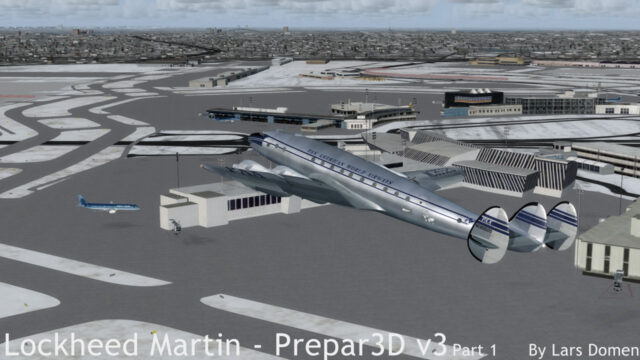
Performance and stability:
Finally, we need to talk about how the simulator performs compared to its predecessors. First of all, Prepar3D already performed better than FSX in most respects for most people with comparable settings. Important to note here, is that comparable settings does NOT mean sliders at the same positions. The minimum and maximum values are different for many settings sliders between the sims. So, with comparable loads, P3D v2 will perform better than FSX on most systems.
More relevant to this article, is that P3D v3 will perform better than P3D v2 in the same situation. When talking about frame rates, what most people understand about performance, the difference is not that great in most cases. Often it will be negligible, although some users have reported quite remarkable numbers. On the case of VAS, virtual addressing space, the difference is larger, with version 3 performing markedly better than version 2. When we consider the fact that P3D is still a 32-bit application, and hence limited to a hard limit 4GB of VAS (going over will crash the sim), any improvement is great here. This directly leads to a more stable sim with less crashes due to too high a memory load. Add to this the fact that P3D v3 now efficiently unloads unneeded memory, and VAS related problems should be much less common in this sim than in any of the ESP-based sims before. Do note that this improved memory management will not save you if you just load in too much data. The 4GB limit is still there, as I said.
As far a stability goes, a stock, unmodded sim should not be giving any problems in the first place. And indeed, my unmodded P3D v3 hasn’t crashed once during testing. It would be very, very annoying if this were different, but luckily it isn’t for me. Please note that the Prepar3D forum has some reports of people ending up with an unstable sim, or with problems related to physical controllers. I didn’t experience any of these, and I hope that those who do are a small minority and get their problems fixed quickly.

Let’s fly:
Before ending this review, I want to take you on one complete flight from origin to destination, airliner style. To do so, I installed a single add-on, the Aerosoft Airbus A320. This is the only third party add-on used in this flight. But the reason for this series of screenshots, is to compare it to a “fully featured” setup. So you get to see P3D v3 out of the box in these shots, with just the A320 added. In part 2, I’ll fly the same flight, but with every relevant add-on I could get my hands on added.
The flight in question is one from Vienna, Austria (LOWW) to London, United Kingdom (EGLL), a flight that’s flown several times every day by several different airlines in real life. I already mentioned I used the Aerosoft Airbus A320. It was flown in winter with a takeoff around 14:30 UTC, resulting in flying in both bright daylight and dusk, even though it’s a relatively short flight. The weather is completely default P3D v3, set to the “Winter Wonderland” weather theme.
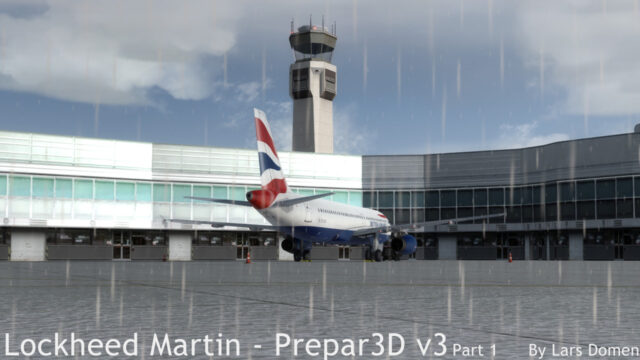





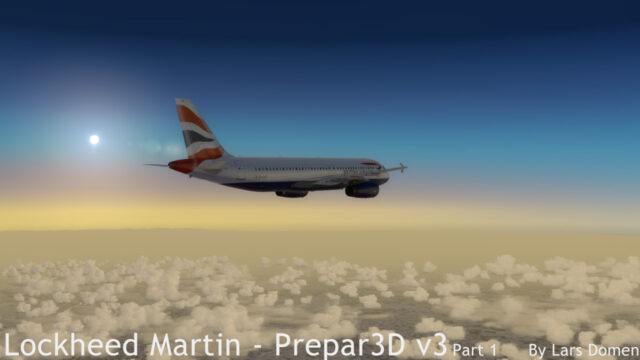

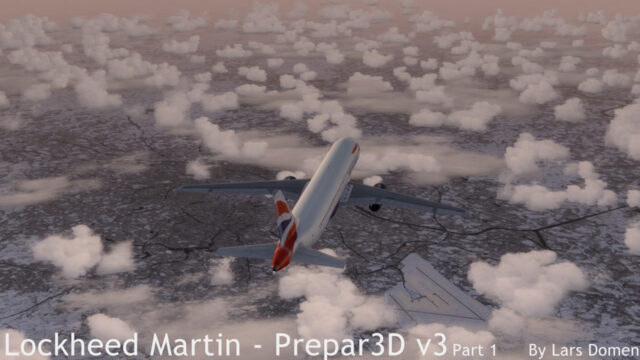



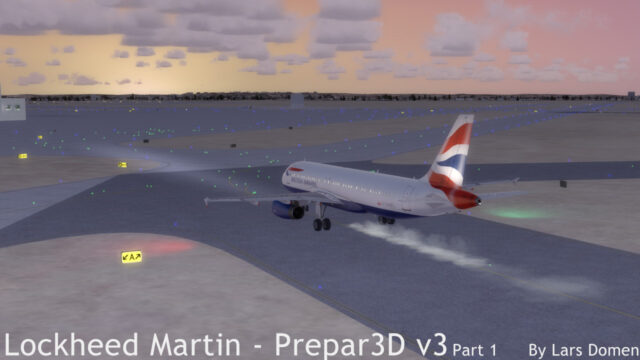
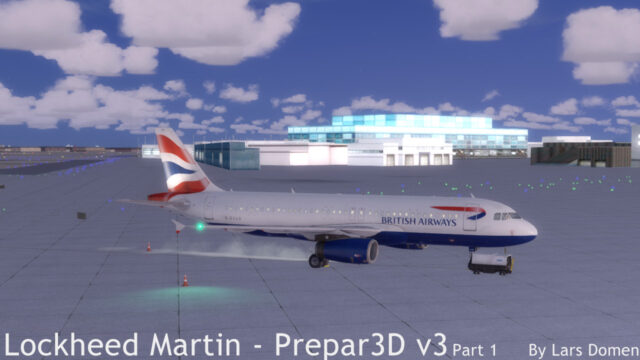
Conclusion:
So, Lockheed Martin moved its Prepar3D simulation platform from version 2 to version 3. As you could read in this article, it’s neither the next best thing to sliced bread, nor just a small patch that should’ve been called version 2.6. While it’s not without issues, it is an evolutionary step in the right direction. In my opinion the greatest new feature is improved memory handling over its immediate predecessor. Anything that improves stability and performance is welcome in my opinion. Clearly, I’ve not said everything that could be said in this article. For example, I didn’t write anything about third party add-ons. A lot can be said about those, but this review was already long enough as it is. If you want to know about add-ons, functionality and compatibility, read part 2 which will be online soon!
Useful links:
Software used:
Lockheed Martin Prepar3D v3 Academic (both v3.0 and v3.1 were used in testing)
Test System:
Intel Core i5-2500K @ 4×3.3GHz (stock speed)
8GB DDR3 RAM
MSI GTX 960 Gaming 2G
Windows 7 64 bit
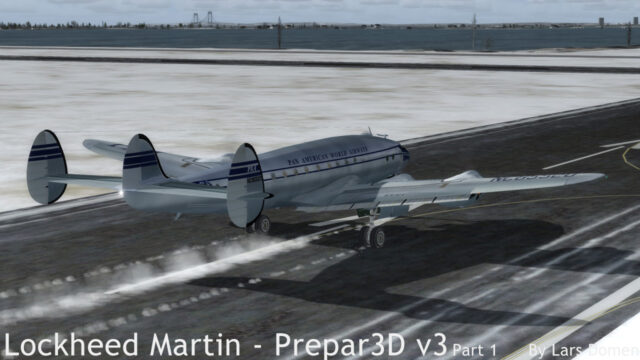

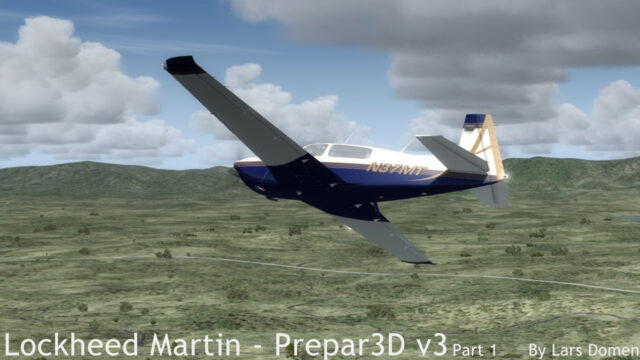

![]()


P3D v3.1 was released on the 21st dec bringing more fixes and new features, see http://prepar3d.com/news/2015/12/113372/ for release notes.
Thanks, Lars. One thing I can say: P3D V3.1 has stopped me tweaking and started me flying, compared to FSX 🙂
The code is too tired and outdated unfortunately and LM are doing their best to extend its life and stabilize it. I bought 2.5 but was not convinced. Autogen perimeter is limited to help with performance and VAS and I was turned off by this to a level that I am back to… FSX. And I am anxious to see what Dovetail will be doing with this old ESP engine.
it was completely impossible to complete a decent flight in any of the previous versions and that has been addressed in version 3 however it is only now catching up with fsx & fsxse as a stable platform. The fact that LM have the gall to demand that previous clients of this simulator once again the full amount is beyond arrogance. I will keep an eye on developments over the next year or so to see if it gets any better before I give them the benefit of my hard earned cash again. Once bitten twice shy!!
Although it never became my primary simulator, P3D was stable and reliable for me in version 2.4 and 2.5. I did many decent and successful flights with it.
As far as LM arrogance is concerned, did you get a discount on FSX for owning any previous MSFS version? I sure didn’t. And it wasn’t cheap when it was new either.
Whether you agree with it or not, it’s just company policy. Calling it arrogance is more than a bit far fetched in my opinion.
FS was released every 2 years more or less, and it was 70 euros here, P3d is released every 2 years and it cost pretty much the same, never got discount for owning the previews version and i consider 70 and even 100€ every 2 years cheap for ANY hobby.
LM is not arrogant as suggested for 2 reason 1 st you are paying for an academic version (which should NOT be used for entertainment, and it is also arrogant to pretend they give it away free) 2 you are getting updates for the version for free, the only big update i remember from MS was 9.1
P3D is worth every cent, if you don’t think so you can stick to the older sim, but i am sure you (SImhaven) find add on developer arrogant as well as normally you have to repurchase add on each version they release it for.
For me it is a hobby, and as every hobby there is a cost involved, and this one is cheaper than most of them and it gives me more satisfaction!
Once bitten twice shy as far as I am concerned. V3 is now only getting back to the stability of FSX and SE so they wont be getting my money again for some time. Anyone want to buy versions 1 through 2.5 , going cheap ?
The way this looks out of the box so to speak, I won’t be buying it anytime soon. Will stick to FSX and FS9, thanks.
Remember, for a fair comparison, you’d need to compare these screenshots to how FS9 or FSX looked out of the box.
When just looking at visual quality, comparing P3D without add-ons to an extensively built-on simulator, well, no prize for guessing the winner.
I’m currently working on part 2 of this review, which will look at P3D with add-ons. Backwards compatibility will certainly be one of the aspects to look at, considering many people have extensive add-on libraries for FS9 and FSX.
Well, I had a more or less full blown FSX and of course, out of the box P3Dv3.1 does not compete with this. BUT: I was able to move many addons over to P3Dv3.1 and then, P3Dv3.1 looks basically the same but of course with the additional eye candy stuff and the improved performance. While I was lurking around with 12-15FPS on a big hub like LFPG using 30% UT2 traffic, REX clouds, FSGRW inside the AS virtual cockpit, I am now on about 20-23FPS in the same situation. However, I have activated self shadowing even on my AI planes, I use now 50% UT2 traffic, ground shadows are on and of course the volumetric fog. So, even though my settings are generally higher with P3Dv3.1, I have 20-30% more FPS on the same addon airport compared to FSX. Sure, a brand new install always runs better, but the increase in performance is far above the benefit from a new installation, so it must be related to all those improvements P3D included in their code.
Great review, Lars — thanks! Are your screenshots full-screen? I don’t see the Academic watermark on any of them. Does the watermark appear only upon startup?